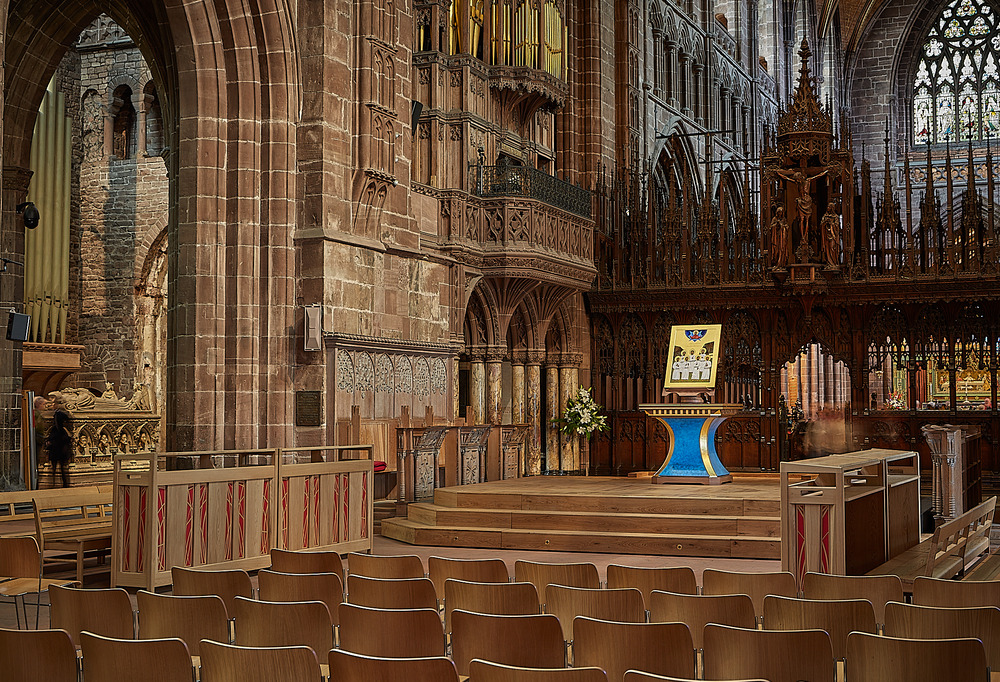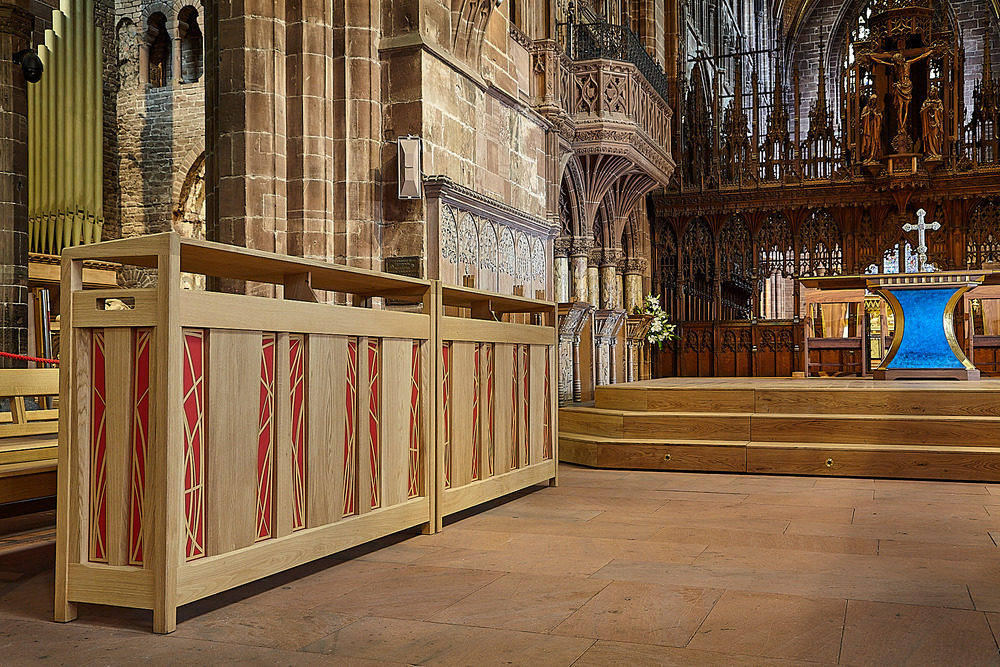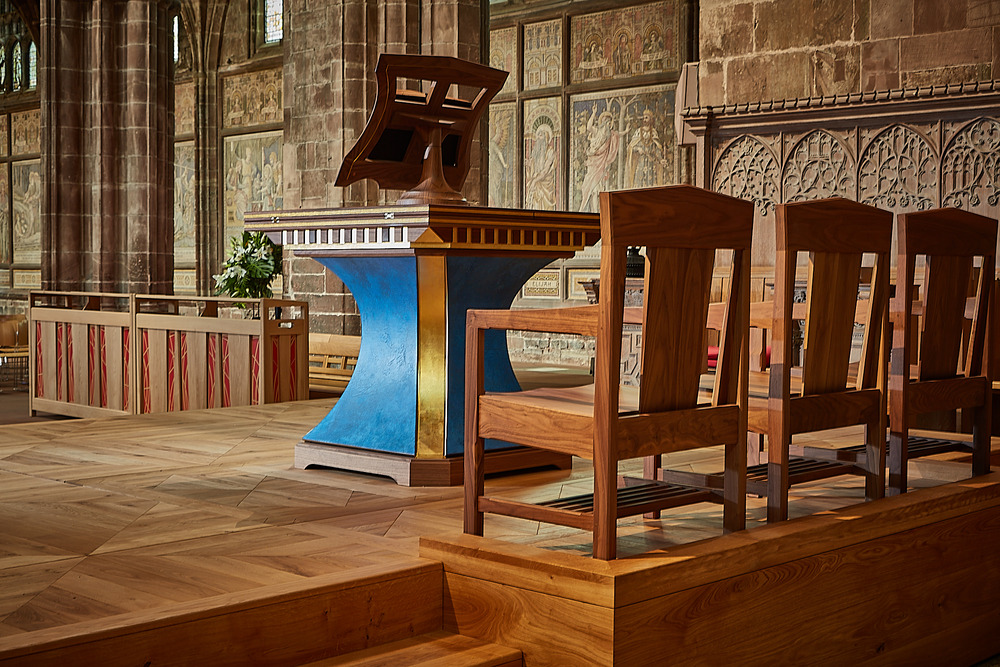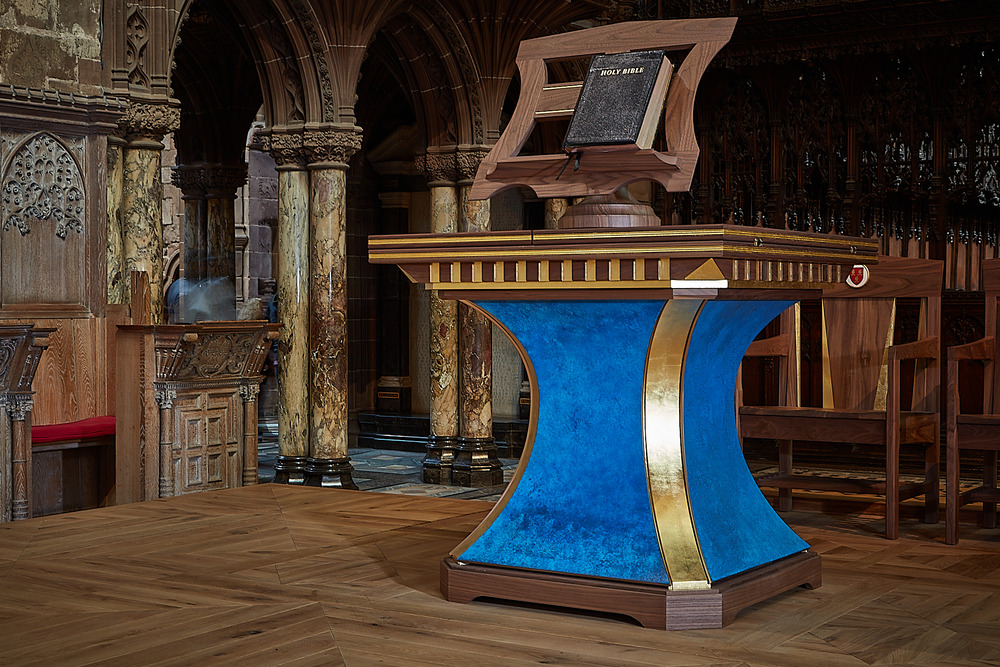The shape of the altar plinth has a deliberate classical form, a nod to the city’s Roman origins in the reign of Vespasian in 79AD. The predominant colours of the plinth are Marian blue and gold. In religious paintings, Mary is traditionally portrayed in blue, a tradition that can trace its origin to the Byzantine Empire, from circa 500AD, where blue was associated with the colours of the Empress, as can still be seen in basilicas and tombs in Ravenna. In Medieval and Renaissance Europe, blue pigment was derived from lapis lazuli, a stone imported from Afghanistan which was then considered to be of greater value than gold. When painters were commissioned, patrons were expected to purchase any gold or lapis lazuli to be used in the painting. Hence it was seen to be an expression of devotion and glorification to swathe the Virgin in gowns of blue. Gold has more obvious connotations with high value. Apart from the fact that it does not tarnish, it has the great advantage of reflecting and accentuating available light. The dentil detail around the top of the altar gives accent to the shape on which the gold leaf can be applied but also disguises the slots into which the bearers for the side wings are mounted.
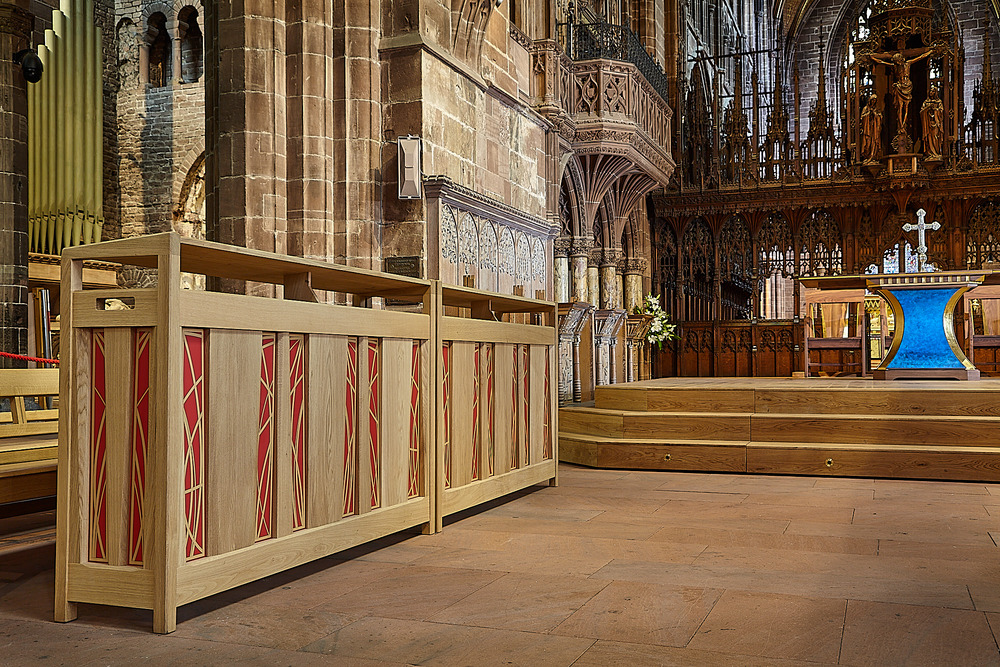
Blue and gold happen to be the colours in the coat of arms of the City of Chester. They are also the dominant colours in the magnificent All Saints’ West window by W T Carter Shapland (1961) which is most striking when illuminated by afternoon and early evening sunlight. The same blue is used in the patination of the bronze surround to the new Pilgrim Porch, thus carrying the theme through the building.
The other materials for both altar furniture and clergy chairs are walnut (as a suitable contrast to set off the gold) and a boxwood inlay, with gold leaf highlights on the plinth. The decoration of the boxwood and herring-bone inlays reflect the patterns in George Pace’s ceiling canopy in the tower. Notches on the lower stretcher of the iconostasis enable it to be easy for arms to pass through - much easier to handle that way, as well as adding visual interest.
Choir furniture includes the choir stalls and seats - which are made in European oak. Their front frames carry red coloured panels (which match the choir’s robes) and a decorative pattern that is also derived from tower ceiling panels. The patterns in the oak cladding to the dais reflect some of Gilbert Scott’s paving arrangement in the choir and lend some visual connection with the more sacred areas in the cathedral. These arrangements tie the whole ensemble more closely to the interior architecture of the building, reduces the clutter, harmonises many of the disparate design elements and greatly facilitates the management of the building.
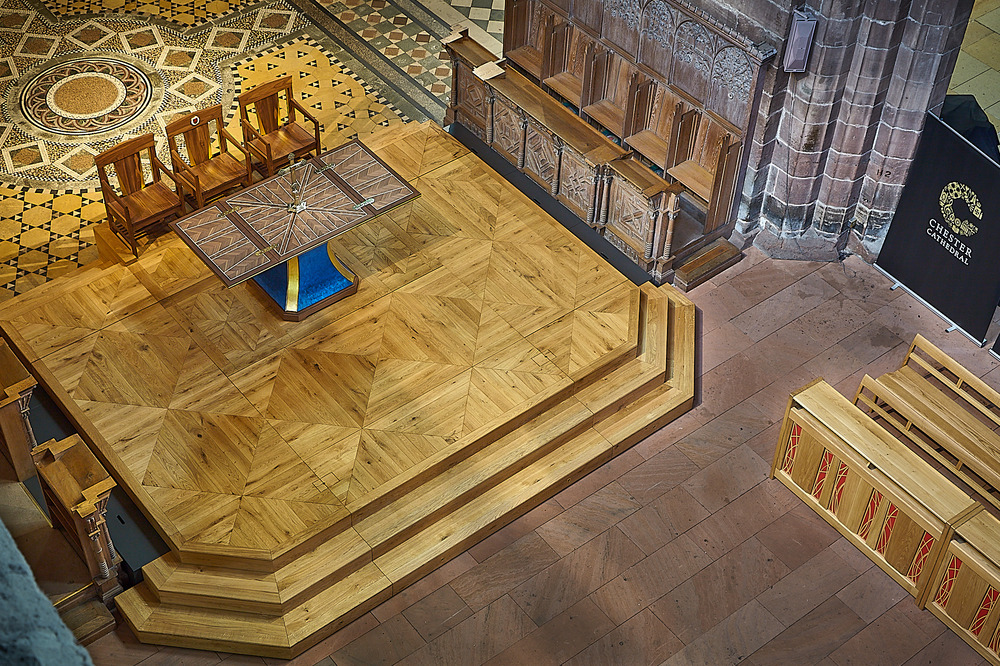
Some practical issues
One of the constraints is the presence of some 17th century stalls (modified by Pace in the 1960s) on each side of the nave and, although there is a plan to move these at some stage, this creates a pinch point for setting out the nave for regular services. An aim was to make the whole ensemble capable of being rearranged for a variety of other secular events, such as concerts, degree ceremonies, flower festivals or civic and county processions. Flexibility, ease of management and storage were fundamental to the design criteria. All the sections of the dais are capable of being simply unclipped, wheeled away or repositioned elsewhere in the nave. No tools, no lifting. The Dean and Luke Hughes managed this on the first afternoon in less than twenty minutes.
The choir are seated on stacking pews that can be moved stored on mobile dollys and the choir desks have their own purpose-made low-slung trolleys. Other items on the wish-list include floor-mounted processional candle-stands, altar candle-sticks, a portable lectern and additional choir music desks.
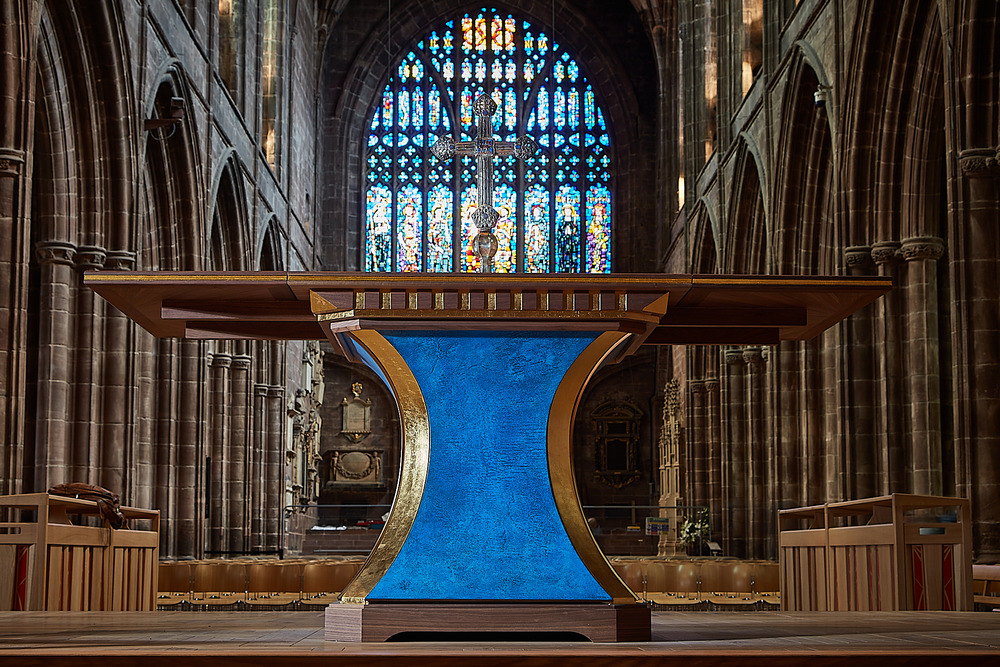
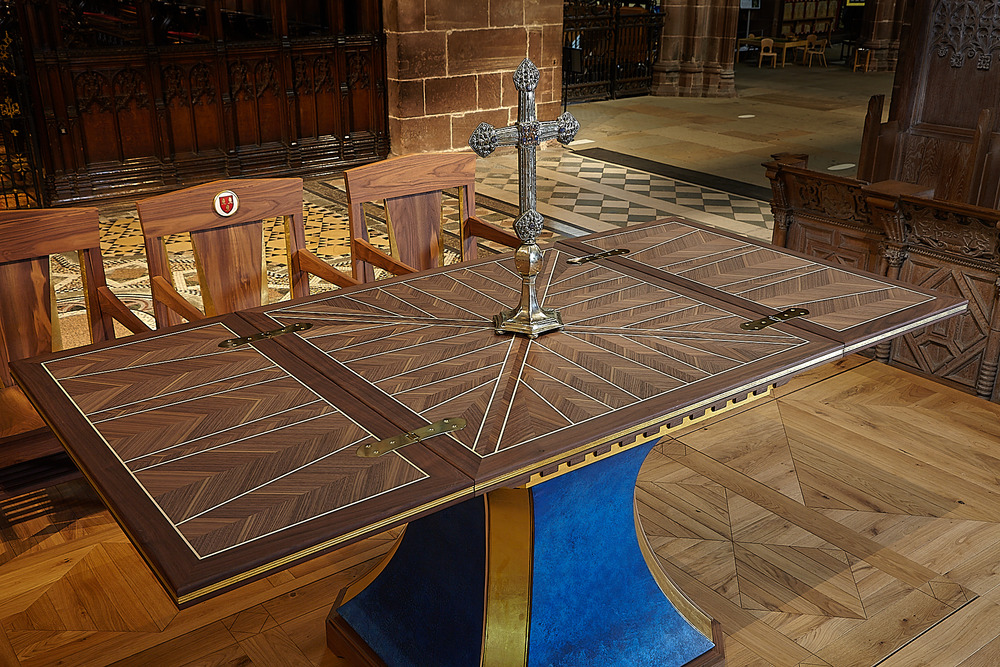
To see more about Chester Cathedral please visit https://www.chestercathedral.com
Photography © Tim Imrie

